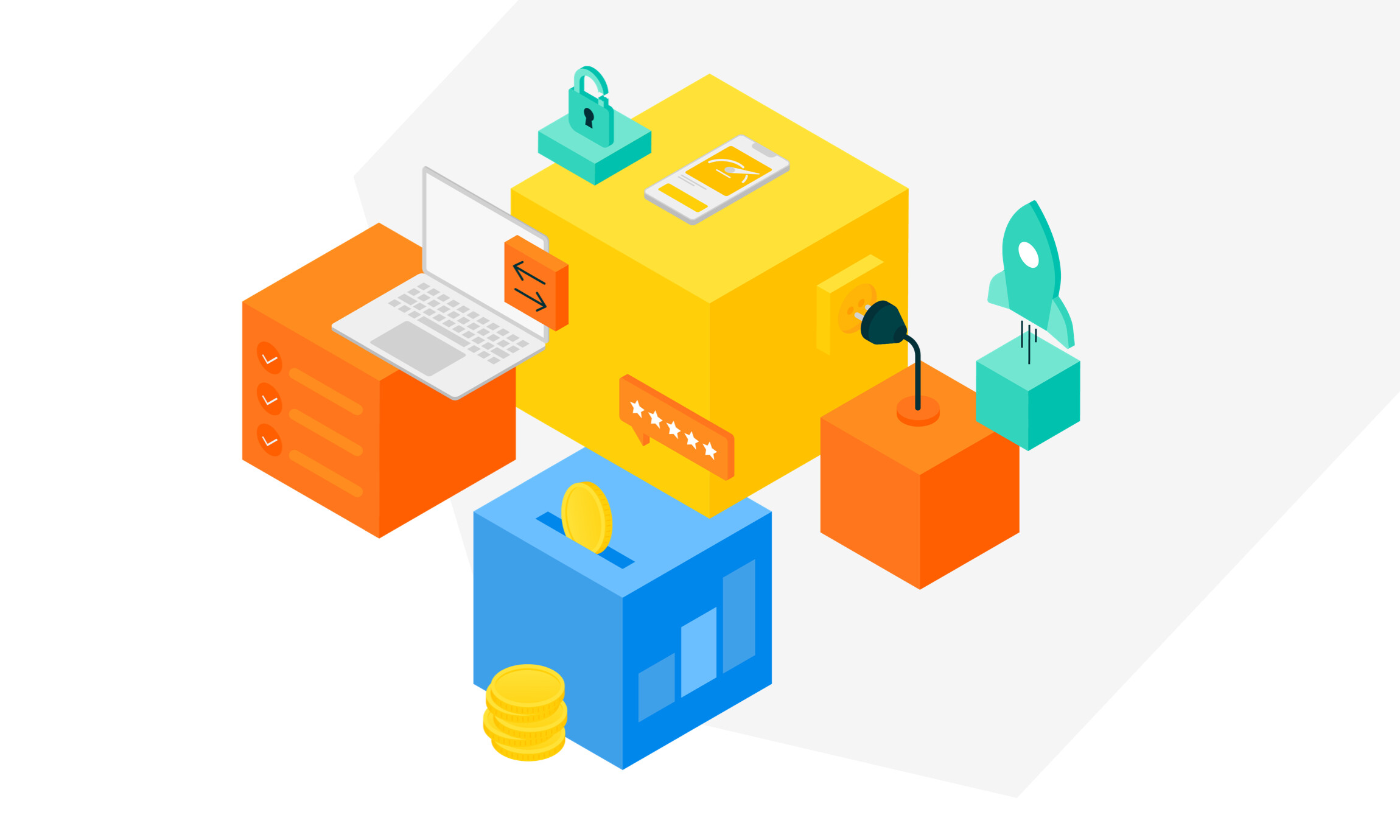
When thinking about your company's eCommerce TCO (total cost of ownership), spending productivity is a key consideration. But what is productivity? And how does it relate to lowering the cost and increasing the efficiency of your digital commerce solution?

The term "spend productivity" in eCommerce means allocating budget on the most beneficial technologies and tools that will make your digital commerce faster, more agile and more innovative — and NOT on spending money only to maintain your eCommerce system with quick fixes that only last as long as the next calamity.
In other words, when considering an eCommerce investment, you need to evaluate the expenses beyond the upfront costs. Look at the spend productivity of a modern commerce solution that will easily empower you to achieve your strategic business goals versus on legacy platforms that require time-consuming workarounds — as well as how these impact TCO in the long run.
So, what's the best way to boost spending productivity? The answer is composable commerce. That's because composable commerce is the most value-maximizing and risk-reducing option available today. Now, let's look at the top five ways that focusing on spend productivity impacts TCO and where composable commerce fits in.
Benefit #1: Spend on results, not overhead
The percentage of overall spending that goes to non-value-creating, parasitic activities such as maintenance and upgrades is staggeringly high in companies using legacy, monolithic platforms. It is often 50% or more of the overall IT budget and tends to increase over time as more technical debt is accumulated. Those dollars are “wasted” on unnecessary work that is largely avoidable in composable commerce solutions.
If you could reallocate your existing budget so that the vast majority of your spend goes toward refining the customer experience and adapting quickly to market opportunities, that would significantly impact your ability to achieve your critical business objectives.
Benefit #2: Buy the best solutions, when you need them
In modern composable architecture, companies have the freedom to select and integrate best-of-breed or best-for-need components. This freedom allows companies to invest in purpose-built products that are focused on a specific area, meeting the immediate needs of the business in the most efficient way. Spending is made much more effective — and returns come at a faster pace — by leveraging only what your business needs right now.
Benefit #3: Frequent, incremental wins
Would you like to bet your business’ future on a working methodology and technology that allows very infrequent changes to your capabilities? Changes that also require a long time to implement and come with a substantial risk of unscheduled downtime or performance degradation?
Businesses that embrace a composable commerce approach undergo a transformation that enables them to employ an agile working methodology across their organization. These companies move to a “release-win-learn-improve” virtuous cycle that would be impossible on non-composable solutions. They can test new ideas, features, channels and business models quickly, learn from these tests and expand/improve as these incremental wins produce more direct and frequent market feedback.
Benefit #4: Focus on superior customer experiences
An additional place where spend productivity has an outsized impact is on business performance. Operating with the total design and functional freedom that comes with a composable commerce approach enables businesses to craft differentiating experiences and continuously improve their customers’ buying journeys.
Gartner states that businesses that focus on a seamless and superior CX will enjoy a 20% lift in revenue. It is a business imperative that your technology spending invests in solutions that enable the maximum level of flexibility to iterate and adapt the customer experience to changing market conditions and opportunities.
Benefit #5: Pay for performance, not technical debt
In simple terms, technical debt is the incremental cost and loss of agility to your company as a result of legacy technologies becoming unfit for purpose. This debt further increases when corners are cut to save time or money when implementing new systems or maintaining existing ones. It occurs when systems aren’t integrated correctly or code is overly complex. This is due to a variety of reasons, such as inefficiencies, time to market considerations or running outdated versions of software, among many other issues.
When evaluating the productivity of your digital spend, have you fully considered the impact of software performance on your cost considerations? Most consumers would not buy a car without understanding the engine specifications and performance. This is equally or more important when evaluating commerce solutions. What’s under the hood matters to the success of your business. So, when selecting technologies, you should account for how effective those technologies are at remediating and avoiding technical debt, as this vital selection criterion is often not thought of sufficiently through.
To learn more about why commercetools is the most cost-effective digital commerce solution, download our white paper "How commercetools Composable Commerce lowers eCommerce TCO."